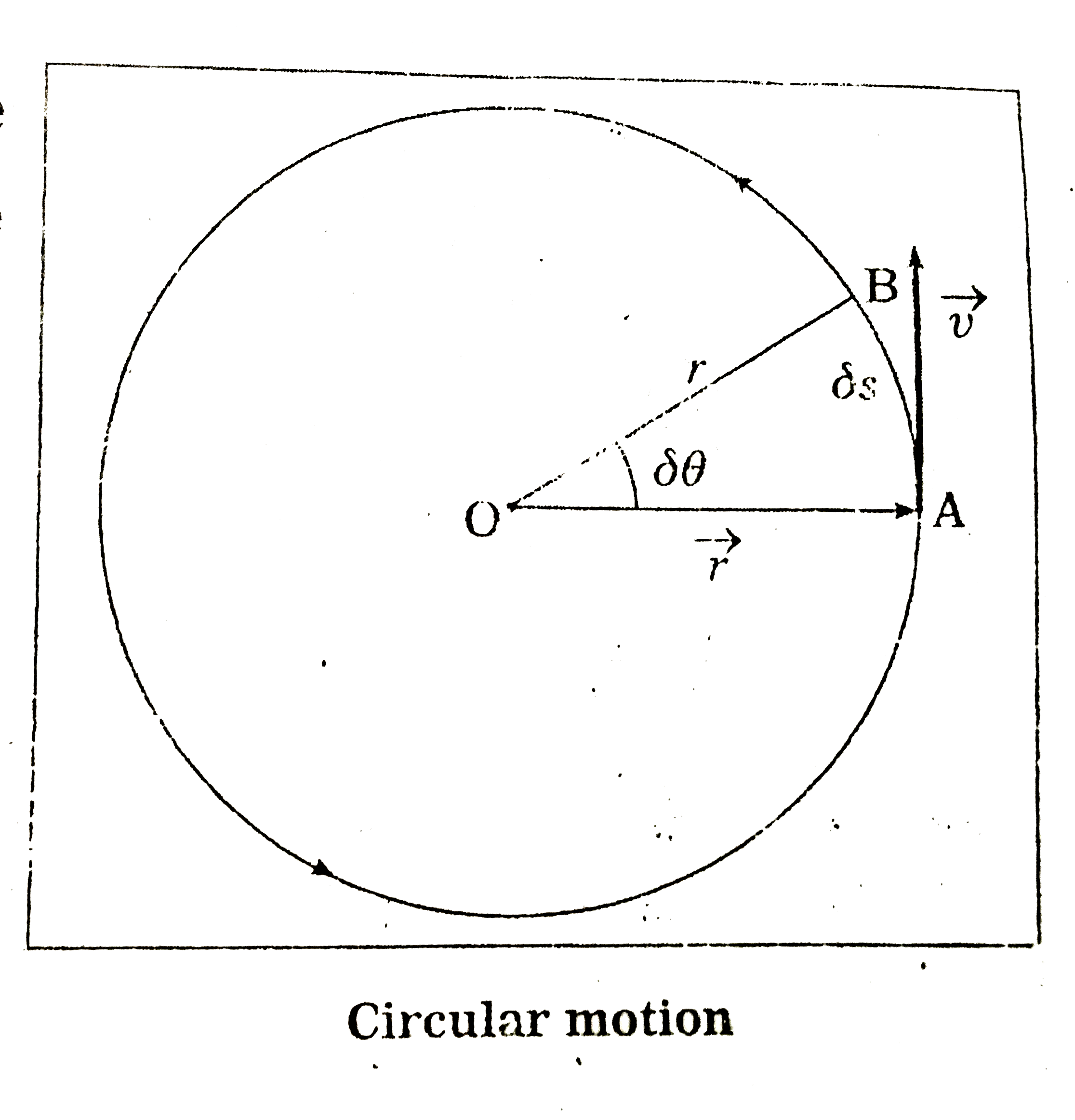The relation between linear speed v, angular speed ω and angular acceleration α in circular motion is
Video Solution
Text Solution
Consider a particle performing circular motion in an anticlockwise sense, along a circle of radius r as shown in the figure. In a very small time interval δt, the particle moves from point A to point B through a distance δs and its angular position changes by δθ.
∴δθ=arcABradius=δSr ∴s=rδθ
THe linear speed v of the particle is the time rate at which the distance is covered by the particle. When δt→0, AB will be a straight line.
v=dsdt=limδt→0δSδt=limδt→0rδθδt
=(limδt→0δθδt)r
∴v=dthηdtr ...(1)

The angular speed ω of the particle is the time rate at which the angle is swept out by the radius vector.
∴ω=dθdt ...(2)
From Eqs. (1) and (2), we get,
v=ωr ...(3)
THus, linear speed = angular speed xx radius.
|
Updated on:21/07/2023
Topper's Solved these Questions
- BOOK - NAVNEET PUBLICATION - MAHARASHTRA BOARDCHAPTER - DERIVATIONS-IEXERCISE - Gravitation7videos
DERIVATIONS-I
- BOOK - NAVNEET PUBLICATION - MAHARASHTRA BOARDCHAPTER - DERIVATIONS-IEXERCISE - Rotational Motion13videos
DERIVATIONS-I
- BOOK - NAVNEET PUBLICATION - MAHARASHTRA BOARDCHAPTER - DEFINITIONSEXERCISE - COMMUNICATION SYSTEMS3videos
DEFINITIONS
- BOOK - NAVNEET PUBLICATION - MAHARASHTRA BOARDCHAPTER - DERIVATIONS-IIEXERCISE - Assignments9videos
DERIVATIONS-II
Similar Questions
Knowledge Check
- Question 1 - Select One
The angular speed ω is given by
A2πnB2π/TC2π/nDboth 'a' and 'b' - Question 2 - Select One
The angular displacement in circular motion is
Adimensional quantityBdimensionless quantityCunitless quantity and dimensionless quantityDunitless quantity - Question 3 - Select One
The relation between tangential or linear acceleration and angular acceleration of a body moving in circle is given by
A→a=→r/→αB→a=→α×→rC→a=→α/→rD→a=→r×α→
Derive the relation between linear displacement and angular displacement.
View SolutionWhat is the angle between linear acceleration and angular acceleration of a particle in nonuniform circular motion?
View SolutionIn a uniforme circular motion, the linear velocity of a particle
View SolutionEstablish a relation between linear velocity and angular velocity in a uniform circular motion and explain the direction of linear velocity
View SolutionRelation between Linear velocity (v) and Angular velocity (ω)
View Solution

